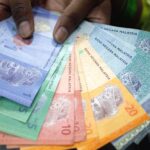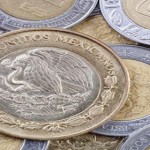Data showed that Chinese manufacturing slowed down for the first time in seven months, which caused equities to drop, thus increasing golds attractiveness as a haven for wealth preservation and boosted its demand. Following an earlier decline, the precious metal rose by 0,5% and traded at $1 376,86 at 2.06 pm in Singapore. The Advance Manufacturing Purchasing Managers Index for China, conducted by Markit Economics and HSBC Holdings Plc,for May dropped to 49,6, which is a negative value as 50 is the neutral point. It is the lowest value since October and is below forecasts. This sent stocks tumbling down and applied upward pressure on gold. Silver, platinum and palladium prices decreased due to their sensitivity to economic growth. The three metals have a much more larger use than gold in manufacturing and are strongly influenced by fluctuations in activity.
Yang Shandan, senior trader at Cinda Futures Co., said: “Gold’s getting a bit of the flight-to-safety trade as equity markets reflect that economic uncertainties are still very much out there. As long as ETF outflows continue, gains will probably be limited.”
Gold found further support today as good economic news came out for the European Union. The Advance Manufacturing Purchasing Managers Index for France and Germany improved and exceeded forecasts. The Advance Services Purchasing Managers Index for France remained unchanged, compared to a forecast for a slight increase and in Germany it rose, but below expectations. The overall good news caused the euro to gain against the greenback, thus pushing gold up above the $1 380 mark.
Gold is 18% lower this year as it lost investors trust as a safe haven for preserving wealth and turned into the second worst performing precious metal after silver. Gold prices were pressured as many investors (like George Soros) and funds cut their holdings in gold-backed ETPs earlier this year, sustaining the bearish trend. Many market players preferred to invest in equities, whose outlook continues to be very positive amid expectations of an improving U.S. labor market and economy as whole. The release of the Fed minutes yesterday revealed that some policy makers think the stimulus measures should be scaled down in June, which would cause the dollar to gain. Strengthening of the dollar tends to decrease the prices of the dollar-priced commodities as it makes the greenback more attractive for investors. Also a more expensive dollar makes commodity prices costlier for foreign currency holders.





